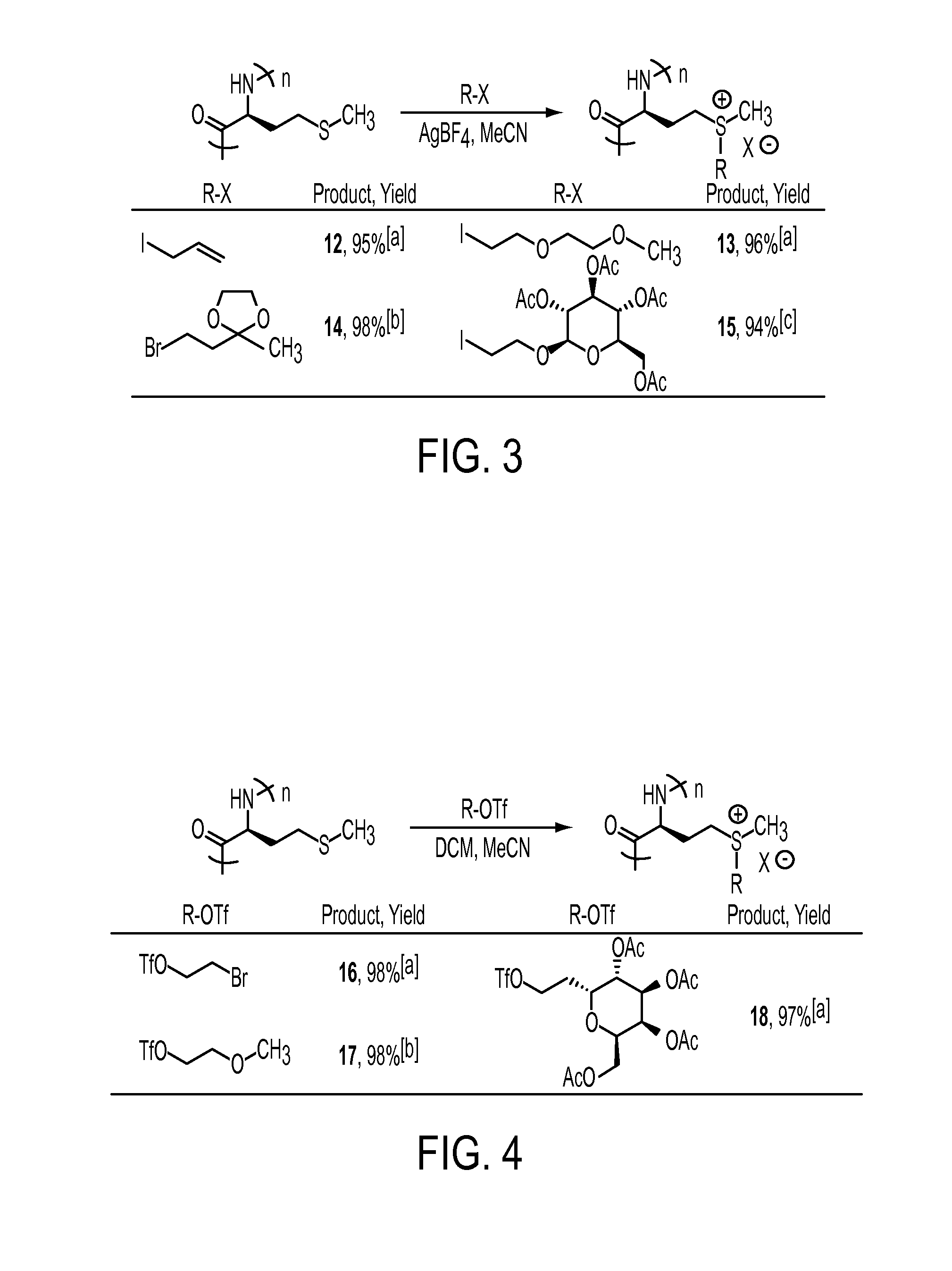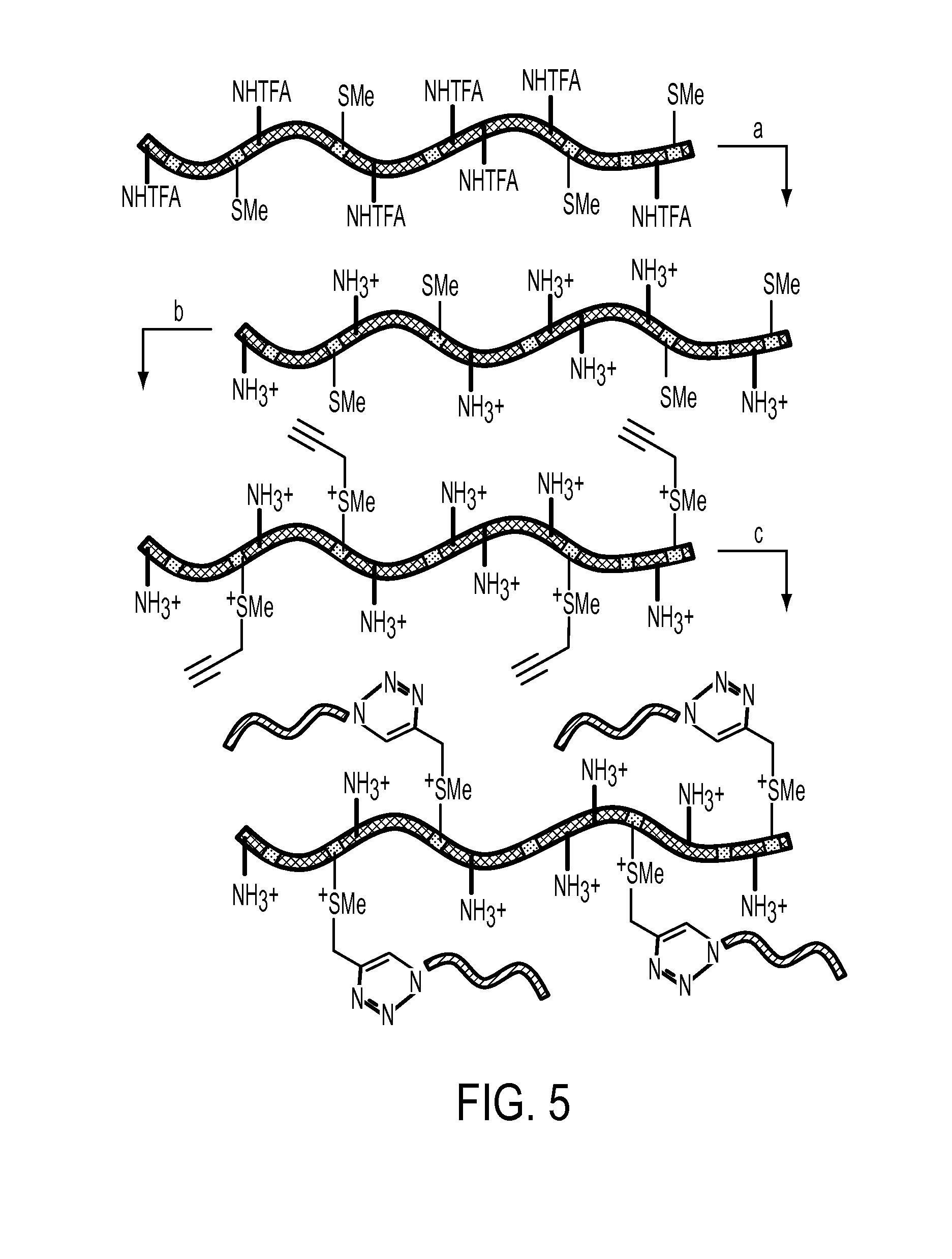Preparation of functionalized polypeptides, peptides, and proteins by alkylation of thioether groups
a technology of functionalized polypeptides and thioether groups, which is applied in the direction of peptide/protein ingredients, immunoglobulins, peptides, etc., can solve the problems of difficult preparation, increased cost, and reduced yield
- Summary
- Abstract
- Description
- Claims
- Application Information
AI Technical Summary
Benefits of technology
Problems solved by technology
Method used
Image
Examples
Embodiment Construction
[0033]The following description is provided to enable any person skilled in the art to make and use the invention and sets forth the best modes contemplated by the inventor of carrying out his invention. Various modifications, however, will remain readily apparent to those skilled in the art, since the general principles of the present invention have been defined herein specifically to provide methods for chemically modifying thioethers in peptides and polypeptides
[0034]This invention includes the introduction of various functional groups onto polypeptides by alkylation of thioether (a.k.a. sulfide) groups, creating new compositions of matter. The thioether groups may either be present in the polypeptides, or may be added to polypeptides containing thioether precursors, such as thiol, alkene or alkyl halide functional groups. We have used existing methods, as well as developed new methods, for alkylation of thioether groups in polypeptides. The methods used are general and can be ap...
PUM
| Property | Measurement | Unit |
|---|---|---|
| Polarity | aaaaa | aaaaa |
Abstract
Description
Claims
Application Information
 Login to View More
Login to View More - R&D
- Intellectual Property
- Life Sciences
- Materials
- Tech Scout
- Unparalleled Data Quality
- Higher Quality Content
- 60% Fewer Hallucinations
Browse by: Latest US Patents, China's latest patents, Technical Efficacy Thesaurus, Application Domain, Technology Topic, Popular Technical Reports.
© 2025 PatSnap. All rights reserved.Legal|Privacy policy|Modern Slavery Act Transparency Statement|Sitemap|About US| Contact US: help@patsnap.com



